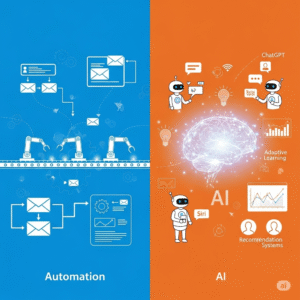The misconception that AI will replace human writers is quickly fading. Instead, we’re seeing a powerful synergy emerge: AI handling the heavy lifting of research, drafting, and optimization, while humans infuse the content with unique insights, empathy, and creative flair. Think of AI as your super-efficient co-pilot, not the solo pilot. (ai content writing tools)
The Foundation: Understanding Your Audience and Intent
Before you even think about prompting an AI, you need a crystal-clear understanding of your goal and your audience. This human-centric approach is the secret sauce to producing truly valuable content.
Step 1: Define Your Content Strategy and Audience Persona
- Who are you writing for? Are they beginners in a field, experts seeking deep dives, or consumers looking for product reviews?
- What problem are you solving or question are you answering? Every great blog post serves a purpose.
- What’s their preferred tone? Formal, casual, humorous, authoritative?
- What are their pain points and interests?
Imagine you’re writing for a startup founder. They’re busy, pragmatic, and looking for actionable advice. Your tone should be direct, helpful, and value-driven. This human understanding will inform every prompt you give your AI content writing tools.
Step 2: Intent-Driven Keyword Research
This is where SEO optimization truly begins, but with a human twist. Instead of just picking high-volume keywords, focus on the intent behind the search.
- Long-tail keywords: These are more specific phrases people type into search engines, often revealing their precise intent. For example, instead of just “blog writing,” consider “how to write SEO-friendly blog posts for small businesses.”
- Conversational queries: People increasingly use natural language when searching. Tools can help identify these.
- “People Also Ask” & Related Searches: Look at Google’s “People Also Ask” section for your primary keyword. These are direct questions your audience is asking. Integrate these questions (or their answers) into your blog post.
- LSI Keywords (Latent Semantic Indexing): These are semantically related terms and synonyms that provide context. For our topic, “AI content writing tools” might have LSI keywords like “AI writing assistant,” “generative AI for blogs,” “content creation software,” “natural language generation,” or “copywriting AI.”
Tool Tip: While I can’t run these, tools like Semrush, Ahrefs, Ubersuggest, or even Google Keyword Planner are indispensable here. They help uncover search volume, competition, and related keywords.
The AI-Powered Drafting Process: From Idea to First Draft
Now that you have your human strategy in place, it’s time to unleash the power of AI content writing tools.
Step 3: Generating a Comprehensive Outline
A solid outline is the skeleton of your blog post. AI can generate detailed, logical structures in seconds, saving you hours of brainstorming.
Workflow:
- Input your main keyword and topic.
- Provide context: “I’m writing a long-form blog post for [target audience] about [topic]. The goal is to [explain goal, e.g., educate them on using AI effectively for content creation].”
- Request an outline: “Generate a comprehensive, SEO-friendly outline with H2 and H3 headings for a 1500-2000 word article on ‘How to Write Blog Posts with AI (Step-by-Step)’. Include sections on defining strategy, using AI for various stages, real-world examples, tips, and ethical considerations. Ensure the primary keyword ‘ai content writing tools’ is used naturally.”
Example AI Prompt: “Create a detailed blog post outline for an article titled ‘How to Write Blog Posts with AI (Step-by-Step)’. The target audience is content marketers and small business owners. The article should be between 1500-2000 words and focus on practical applications of ai content writing tools. Include sections on planning, drafting, optimizing, and humanizing AI content, along with case studies and tool recommendations.”
Step 4: Crafting Engaging Introductions and Conclusions
The intro grabs attention, and the conclusion leaves a lasting impression. AI can help you bypass writer’s block for these crucial sections.
Workflow:
- For Introduction: “Write a compelling introduction for the blog post titled ‘How to Write Blog Posts with AI (Step-by-Step)’. Hook the reader, state the problem (time-consuming content creation), and promise a solution using ai content writing tools. Keep it conversational and around 150 words.”
- For Conclusion: “Write a strong conclusion for the article, summarizing key takeaways about leveraging AI for blog writing. Include a call to action for readers to experiment with ai content writing tools responsibly. Emphasize the synergy between human creativity and AI.”
Step 5: Drafting Content Section by Section
Instead of asking AI to write the entire article at once (which can lead to generic, less humanized output), feed it one H2 or H3 section at a time.
Workflow Example (for a section on “Idea Generation”):
- Provide the heading: “H2: Unlocking Ideas: AI for Brainstorming & Topic Generation”
- Give context and specific points: “Based on the outline, write a detailed paragraph (200-250 words) for this section. Explain how ai content writing tools can help overcome writer’s block by generating topic ideas, headlines, and even content angles. Mention tools like Jasper’s ‘templates’ or ChatGPT’s brainstorming capabilities. Keep the tone encouraging and practical.”
This segmented approach allows you to maintain control, review output, and guide the AI more effectively, ensuring the content aligns with your vision and voice.
Elevating Quality: Humanization & Optimization
This is where your human expertise truly shines. AI provides the raw material; you sculpt it into a masterpiece.
Step 6: Infusing Human Touch and Brand Voice
AI models are constantly improving, but they don’t yet possess genuine empathy, personal experience, or unique perspectives. This is your differentiator.
- Add personal anecdotes: Share a story about how an ai content writing tool helped you meet a tight deadline.
- Inject your brand’s unique voice: If your brand is witty, make sure the AI’s output reflects that after your edits.
- Use analogies and metaphors: These make complex ideas relatable and are something AI often struggles to generate authentically.
- Fact-check relentlessly: AI can sometimes “hallucinate” or provide outdated information. Always verify facts, statistics, and tool features.
- Paraphrase and rephrase: Don’t just copy-paste. Rewrite sentences to sound more natural and avoid sounding robotic or repetitive. As HubSpot advises, “Proofread and edit your AI-generated content before publishing it. Edit AI-generated content to maintain your brand’s voice and style.”
Step 7: SEO Optimization Beyond Keywords
While we’ve already woven in keywords, here’s how to refine the SEO for Google’s guidelines:
- Readability: Use short paragraphs, bullet points, numbered lists, and bold text to break up content. Tools like Grammarly or Hemingway Editor (AI-powered or not) can help improve sentence structure and clarity.
- Internal Linking: Link to other relevant articles on your own blog. This keeps readers on your site longer and helps distribute “link juice.” For example, if you have a detailed guide on prompt engineering, link to it when discussing AI prompts.
- External Linking: Link to authoritative, credible sources like Zapier, HubSpot, and OpenAI. This builds trust and demonstrates the depth of your research.
- Image Optimization: Use relevant images, charts, and videos. Crucially, add descriptive alt text to all images. This aids accessibility and provides SEO context.
Real-World Impact: Case Studies and Practical Applications
To truly humanize your content and demonstrate the value of ai content writing tools, showcasing real-world scenarios is essential.
Use Cases: AI Saving Time Across Industries
1. Content Marketing Agencies: Agencies often manage dozens of client accounts, requiring a massive volume of content. AI can drastically reduce the time spent on initial drafts, ideation, and even social media copy. A marketer can use an ai content writing tool to generate 10 variations of an ad headline in seconds, then pick the best one to refine.
2. E-commerce Businesses: Writing unique, SEO-friendly product descriptions for hundreds or thousands of products is a monumental task. AI can generate engaging descriptions, benefit-led bullet points, and even meta descriptions at scale. This frees up human marketers to focus on campaign strategy and customer engagement.
3. Small Business Owners: For entrepreneurs wearing multiple hats, time is precious. AI can help them quickly draft website copy, email newsletters, local SEO blog posts, and even rough scripts for video content, allowing them to maintain an online presence without hiring a full-time content writer.
4. Journalists and Researchers: While AI won’t replace investigative journalism, it can aid in summarizing long reports, drafting factual recaps of events, or generating interview questions based on a topic. This speeds up the information synthesis phase, allowing journalists to focus on in-depth analysis and original reporting.
Short Case Studies
Case Study 1: “The Startup’s Content Surge”
“Sarah, the sole marketing manager at “EcoGrow,” a sustainable gardening startup, was struggling to keep up with their blog. She knew consistent content was vital for SEO and customer engagement, but drafting 3-4 posts a week was draining. She decided to try an ai content writing tool for her outlines and first drafts.
- Before AI: Each 1000-word blog post took Sarah roughly 6-8 hours (research, outline, draft, edit).
- With AI: Sarah used AI to generate outlines in 15 minutes and rough drafts in under an hour. She then spent 2-3 hours refining, adding personal insights, and optimizing.
- Result: Sarah could now produce 5-6 high-quality, humanized blog posts per week, leading to a 30% increase in organic traffic within three months and a noticeable boost in engagement on topics like “composting for beginners.” Her audience appreciated the consistent, helpful advice, unaware of the AI’s initial role.”
Case Study 2: “Freelancer’s Efficiency Leap”
“Mark, a seasoned freelance content writer, initially scoffed at ai content writing tools. He valued his unique voice and feared losing it. However, a client project with a massive volume of product descriptions forced him to reconsider. He experimented with AI for generating the first few bullet points and a concise summary for each product.
- Before AI: Writing 50 product descriptions took Mark an entire day (approx. 8 hours).
- With AI: Mark used AI to kickstart each description, providing a few keywords and tone instructions. He then spent a few minutes humanizing, adding unique selling propositions, and ensuring brand voice consistency. This reduced his time per description significantly.
- Result: Mark could now complete the 50 product descriptions in about 3 hours, freeing up his afternoon for higher-value, creative projects like case studies and thought leadership pieces, ultimately increasing his hourly rate and client capacity.”
Practical Tips & Beginner-Friendly Workflows
Making AI part of your writing routine is easier than you think.
Tool Suggestions for Your Toolkit:
- ChatGPT / Google Gemini: Excellent for brainstorming, outlining, generating diverse ideas, summarization, and rephrasing. They are versatile conversational AIs.
- Jasper: Known for its long-form content capabilities and templates for various content types (blog posts, ad copy, product descriptions). Often used by agencies and serious content creators.
- Writesonic: Offers a wide range of writing tools, from articles to landing pages, with good quality output.
- Copy.ai: Specializes in shorter-form content and marketing copy, but also has long-form capabilities. Great for social media, ad headlines, and email subject lines.
- Grammarly (with AI features): Beyond basic grammar, its premium version offers tone adjustments, clarity suggestions, and can even help with full sentence rewrites.
- Surfer SEO / NeuronWriter: These tools combine AI writing with robust SEO analysis, helping you create content that’s optimized for target keywords and competitor insights.
Beginner-Friendly Workflow for Your Next Blog Post:
- Define: What’s the blog post about? Who is it for? What’s the main takeaway? (Human brain)
- Keywords: Use a keyword tool to find your primary keyword, long-tail variations, and LSI keywords. (Human + Tool)
- Outline with AI: Input your topic and primary keyword into an ai content writing tool to generate an initial outline. (AI)
- Refine Outline: Review and adjust the AI’s outline. Add, remove, or reorder sections to make it more logical and flow better for your audience. Add specific points you want to cover under each heading. (Human)
- Draft Intro & Conclusion with AI: Use AI to generate drafts for your intro and conclusion, then refine them significantly. (AI + Human)
- Draft Section by Section: For each H2/H3 in your refined outline, provide the heading and 2-3 key points to your AI tool and ask it to write a paragraph or two. (AI)
- Edit & Humanize: This is the most critical step. Read through everything.
- Does it sound natural?
- Is your brand voice present?
- Are the facts accurate?
- Are there personal touches or unique insights?
- Is it clear, concise, and engaging?
- Add relevant internal and external links.
- Optimize images with alt text. (Human)
- SEO Review: Use an SEO plugin (like Yoast SEO or Rank Math if on WordPress) or an SEO writing tool (like Surfer SEO) to check for keyword density, readability, and other on-page SEO factors. Make adjustments. (Human + Tool)
- Proofread: A final, meticulous proofread for any lingering errors. Consider using a tool like Grammarly. (Human + Tool)
- Publish & Promote: Get your amazing, human-AI-powered blog post out there!
Ethical Considerations and The Future of AI in Content
While ai content writing tools offer immense benefits, it’s crucial to address ethical considerations.
- Transparency: Be transparent about your use of AI, especially if the content is highly sensitive or opinion-based.
- Bias: AI models are trained on vast datasets and can sometimes reflect biases present in that data. Always review content for fairness and accuracy.
- Originality and Plagiarism: While AI aims to produce original content, it’s always wise to run AI-generated text through a plagiarism checker. More importantly, focus on adding your unique insights to make the content truly original.
- Human Oversight: As UNESCO emphasizes, “AI systems should not displace ultimate human responsibility and accountability.” The human remains in charge of the message, accuracy, and overall quality.
The future of content creation is undoubtedly collaborative. AI content writing tools will continue to evolve, becoming even more sophisticated and integrated into our workflows. They will empower us to focus on the strategic, creative, and empathetic aspects of content creation, leaving the mundane and repetitive tasks to our digital assistants. This synergy won’t just make us faster; it will make us better, enabling us to produce more impactful, humanized content for a more connected world.
ai content writing tools (primary), how to write blog posts with AI, AI for content creation, generative AI for blogs, AI writing assistant, content creation software, SEO optimized blog posts, humanized AI content, AI content strategy, blog writing tips AI, save time content creation AI, AI in digital marketing, AI content workflows, best AI writing tools, AI for freelancers, AI for marketers, ChatGPT for content, Jasper AI for blogs, Writesonic content writing, Copy.ai blog posts



